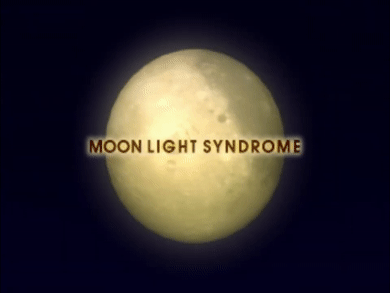Program: Takemura, Takashi | Sound: Niikura, Kouji | Screenplay: Suda, Goichi
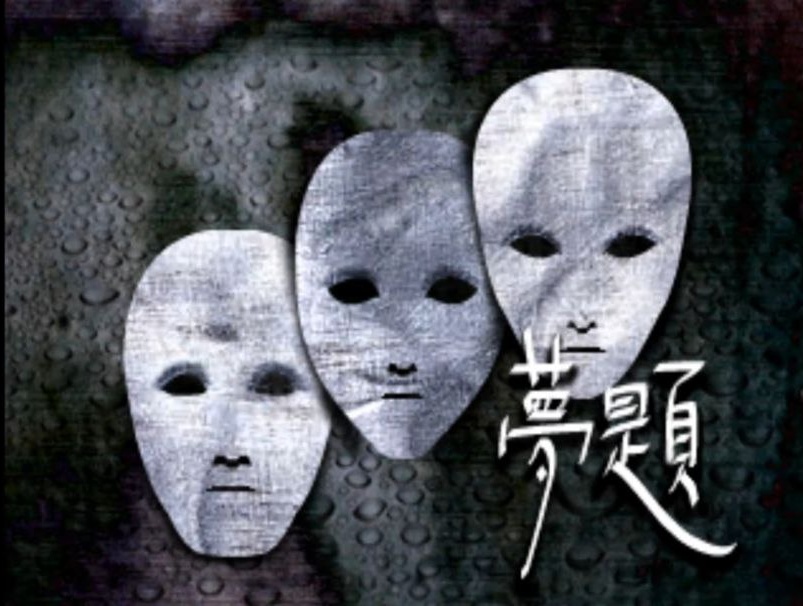
The chapter starts by flashing back to the previous day; In other words, it’s supposedly showing the events preceding Mika’s encounter with the cultist and her late-night escapade with Sumio.
Ryo begins describing a dream he had about his older sister, which takes the form of an interactive dialogue scene.
You have multiple branching choices here but what it boils down to is that in Ryo’s dream, Kyoko is aware of Ryo’s feelings and reciprocates them. (Keep in mind that this is a dream. We never actually see the real Kyoko on screen.) However, she does not yet see Ryo as a man capable of protecting her, and she instead wants to shield him from the world and from the consequences of their incestuous love.
Depending on the player’s choices, Ryo might be more or less reluctant in accepting his sister’s protection, but he will relent eventually. This is building up to Ryo’s eventual decision to become Mika’s protector, the girl who reminded him so much of the sister he loves. Ryo likely sees Mika, a girl younger than him, as a substitute for the sister that was too far ahead of him to properly be cared for.
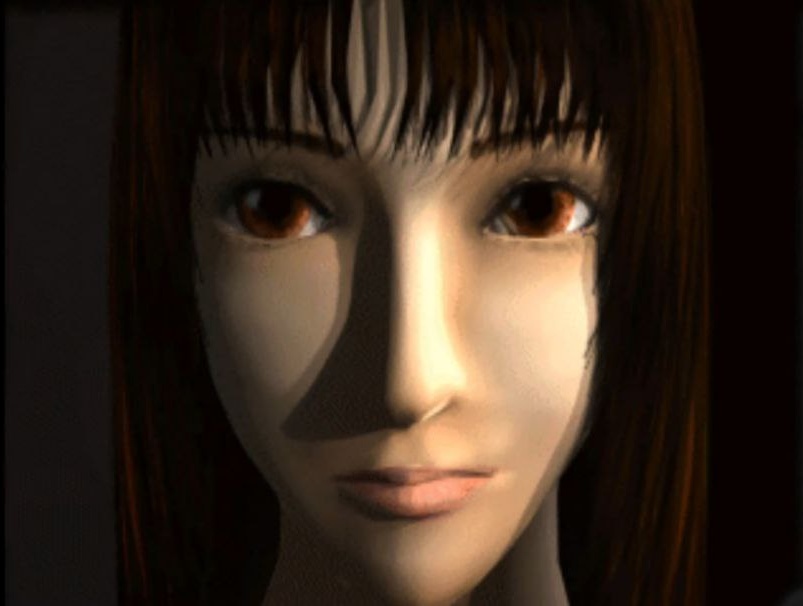
Once Ryo finishes narrating the dream to himself in the mirror, ashamed of his own perversion, Sumio shows up at his house and starts berating him over his weakness of character, claiming that’s the reason why he has a better handle on Kyoko than Ryo does.
Ryo tries to put an end to the conversation by claiming he has to leave, but Sumio insists that the reason why he and Kyoko had to break up is because of Ryo constantly standing between them. Ryo’s weakness meant that Kyoko would always have to look after him, neglecting her relationship with Sumio. Ryo rebuts that Sumio is just making excuses for getting dumped, to which Sumio responds that he can have her for all he cares since he has other women on the side. Before leaving, Sumio claims that he has grown attached to Ryo, and that he will be sticking by him “in spirit”, another ominous foreshadowing of his death.
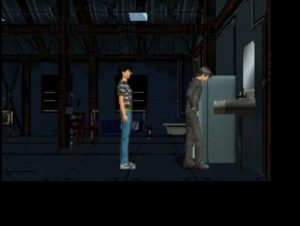
As he leaves, Ryo resolves to go after him. This may seem confusing at first, but 陰約 INYAKU will actually shed some light on this interaction: Ryo, despite his own wishes and Sumio’s behavior, still worries for his safety. Suda himself described it as a “love-hate” relationship in his In-depth Guide interview. In front of the club, Ryo meets with Rumi, Sumio’s younger sister.
Rumi claims that meeting there is pure coincidence as she was just talking a walk, rather than an attempt to rekindle their flame. (In other words, Ryo and Rumi used to be in a romantic relationship.) Ryo tries to warn her of Sumio’s insanity, but she responds that his behavior is not at all out of the ordinary. She then immediately follows up this statement by claiming that she is fully aware that Ryo was merely using her as a stand-in (substitute) for someone else, to which Ryo denies being a copy of Sumio.
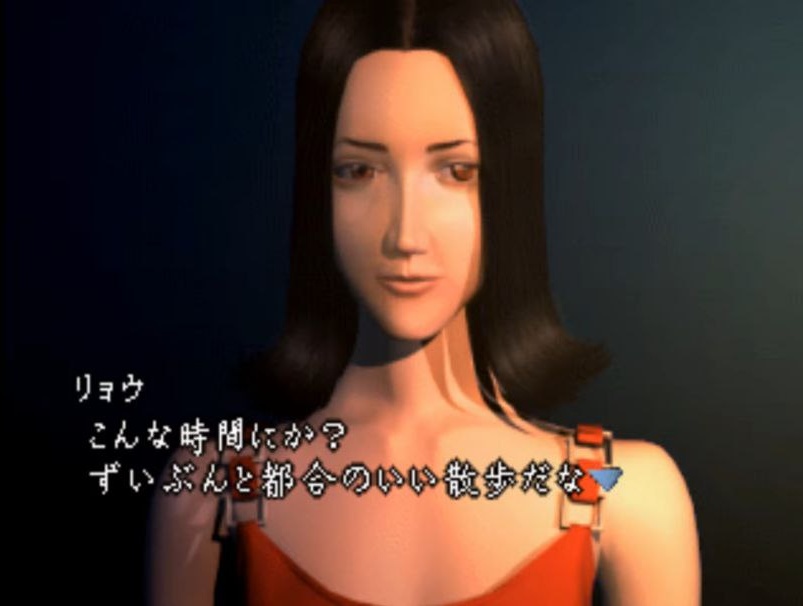
What they’re getting at in this exchange is that Sumio, as a womanizer, collects an assortment of women to act as replacements for Kyoko. Rumi berates Ryo, both for his lack of affection (during their relationship he was actually harboring feelings for his sister rather than for his girlfriend) and for not being able to keep Kyoko to himself, which in turn led to Sumio neglecting Rumi. She ultimately concludes, however, that she is the one resembling Sumio: As she suffered from Ryo’s cold attitude, she longed for the warm embrace of her own brother.
She tries to remind Ryo of a happy day they spent together in a field, with clear skies, together with Kyoko and Sumio, but Ryo insists that memory holds no value. (It will eventually be revealed in 陰約 INYAKU that Ryo actually keeps a photograph taken said day at the side of his bed, indicating that he’s just lying to keep Rumi at a distance, or possibly to avoid admitting that the one he longed for that day was actually Kyoko.)
She wishes she could go back to those times, when the four of them could be together without worry, but Ryo considers her attachment a form of escapism, “running away” from a reality in which she is incapable of finding a reason to live, to which Rumi replies that Ryo is doing the same. Unable to admit his feelings for his sister, Ryo paints himself a stoic loner, wielding his weakness as if he were strength, to avoid facing reality. Rumi taunts Ryo by saying that Kyoko is lucky to have him, and leaves.
These three scenes, confusing as they may be on a first approach, set up the twisted love quadrangle which serves as the inciting incident for the whole game: Ryo is in love with her sister, but due to his own weakness he is incapable of facing up to the world with the weight of his incestuous feelings. Kyoko may or may not reciprocate him (again, we never actually see the real Kyoko in the game) but she chooses to be with the womanizing Sumio instead. Rumi, who also craves attention from her brother, gets closer to Ryo and the two enter a relationship. However, both relationships eventually break down due to Ryo being unable to reciprocate Rumi’s feelings, and Kyoko being too preoccupied with her brother’s own weakness to maintain a relationship that Sumio would consider satisfying. Rumi still pines after Ryo, Ryo wishes he had the strength necessary to enter a real relationship with Kyoko, and Sumio replaces Kyoko with a cavalcade of one-night-stands through his skills as a womanizer (one of them being Mika Kishii). What Kyoko really wanted is utterly unclear. Both Sumio and Rumi seem to think that what Kyoko wanted was to be with her brother, but at the same time, Ryo’s dream shows us that he conceptualizes his sister as a grown woman incapable of seeing him as a man/caretaker.
DO YOU KNOW GAMING?

Because of this scene, in which Rumi claims to not care about Ryo in the slightest only to spend the next 40 minutes criticizing his performance as her boyfriend, Suda51 has been given the “Most Perfect Understanding of Female Psychology” award by the Council of Gaming Kings.
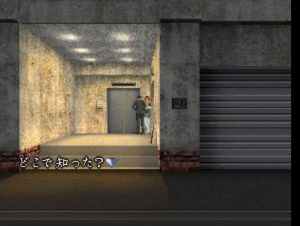
At the same time, we are introduced with one of the game’s main motifs, which is the way relationships are handled within the main characters. It seems that all of those who claim to be in love are actually just using their peers to fill in a slot in their lives, or to fulfill a role. In other words, people are treated as a commodity to be traded and used rather than as living, thinking creatures you interact with. The random women that Sumio dates are substitutes for Kyoko, Ryo was a substitute for her brother in Rumi’s eyes, and Sumio might even have been a substitute for the caretaker figure that Kyoko could not find in Ryo. (It should be noted that Ryo and Kyoko seem to have no parents; therefore, Ryo’s inability to take care of the household might have weighed heavily on his sister.)
Ryo tries to enter the club, claiming to be a guest of Sumio, who has rented the venue for the night. The doorman eventually lets him in.
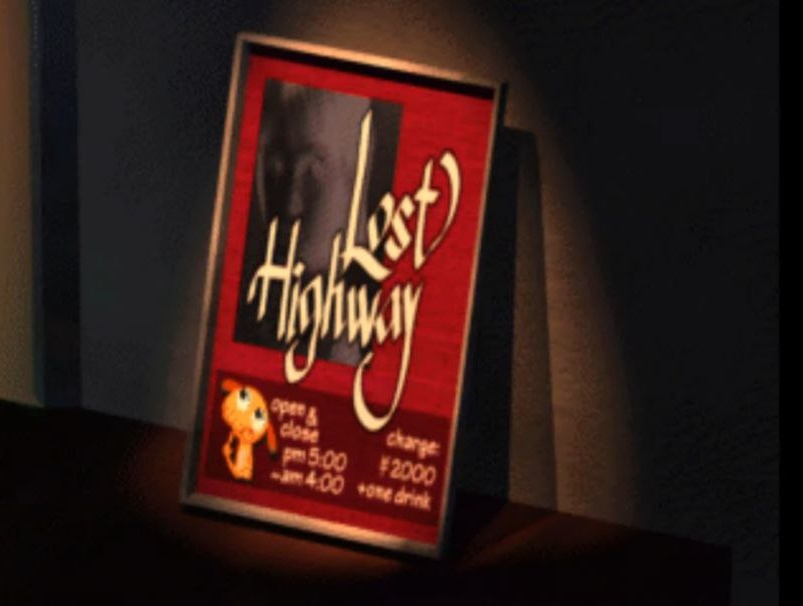

As he walks by, Ryo is made fun of by the receptionists due to his choice of attire, which they consider to be an insult to Techno. Specifically, they say his belt is “swiped from a Nagai manga”. Go Nagai is the creator of Mazinger, Cutie Honey, Devilman and, most relevantly, Violence Jack. Suda has claimed in the past to be a fan of Nagai’s work, meaning the later Violence Jack reference in this chapter is definitely intentional.
Moonlight Syndrome also happens to be one of the most fashionably conscious videogames ever made, partly due to Suda’s own understanding of current trends and partly because of Takashi Miyamoto’s peculiar approach to character design. None of the fashion choices in the game are random; in fact, the Playstation Victory Special details all of them.
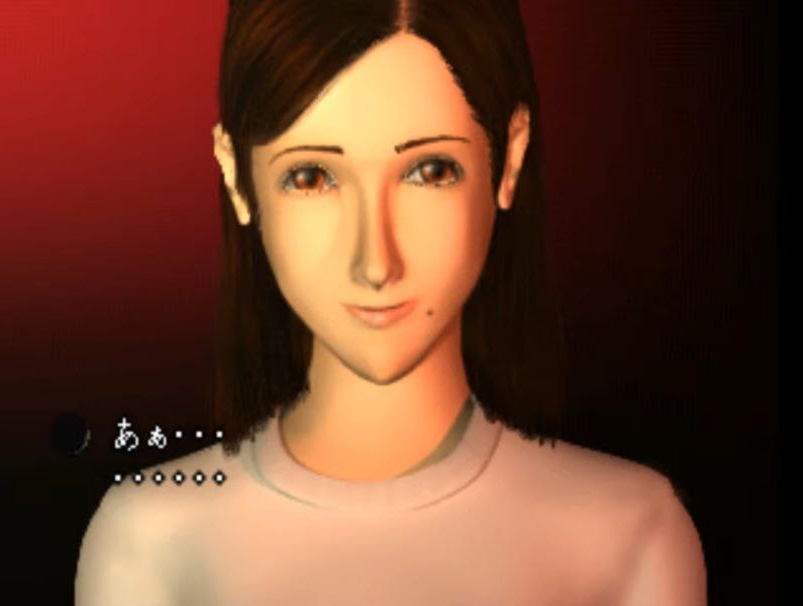
On the dance floor, Ryo is accosted by Yayoi Itsushima. She starts flirting with Ryo and it’s up to the player to decide whether or not to reciprocate, but the end result is the same. She eventually invites Ryo to meet her upstairs.
Interestingly enough, when asked why he’s in the club (since Yayoi also notices his lack of proper Techno Music attire), Ryo responds that he just wants to be somewhere that’s below the ground. This may be a stretch, but as Ryo is ultimately revealed to be a Shelter Child in The Silver; this may be an early hint of that revelation, as Shelter Children are naturally attracted to the underground due to their upbringing. While this is unlikely, it should be noted that the term 残留思念 (Remnant Psyche, Lingering Consciousness) who would eventually appear in The Silver was present in Moonlight’s scenario drafts, and a Silver Eye is even depicted on Moonlight’s Instruction Manual, meaning that, at the very least, those ideas were already buzzing around Suda’s head at the time.
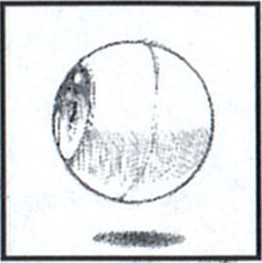
Most of the optional dialogue scenes in the club are related to the game’s themes of changing generations, urbanization, the westernization of Japan and so on. There’s no reason to detail all of them but there’s an especially funny one involving a couple of youths discussing how fast they adapted to all the societal changes that made Japan more similar to the west, yet one of them immediately gets upset when he finds out the girls they came with left with a black foreigner. A couple of Hinashiro high-school graduates will also refer back to the events of Twilight Syndrome, mentioning Okuno’s affair with a student (from its second rumor, M.F. in the music room) and namedropping Saeki (from its sixth rumor, the twilight boy, who might also have been initially considered for the role of Sumio). They also give some backstory on the school’s renovation, claiming that the new headmaster, who also fixed the school budget, was brought in from Denmark where he studied management.
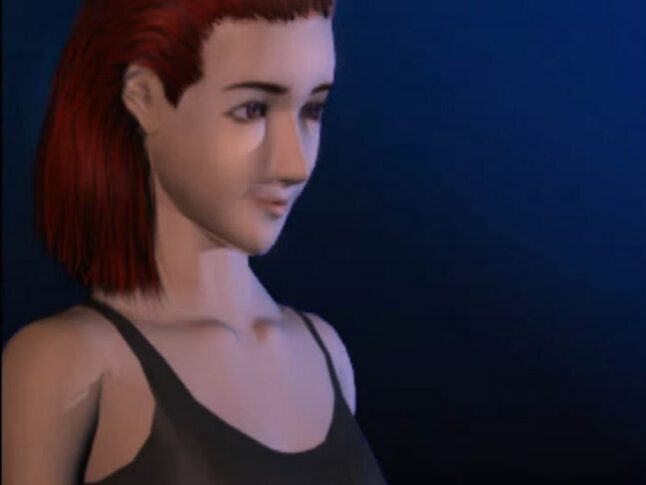
Ryo is approached by Kimika Takahashi, an ex-classmate, in the bar. (It should be noted that while Mika had a classmate called Kimika in Twilight Syndrome, they are not the same character, as Takahashi already graduated from high-school.)
She also comments on how Kazan has softened compared to his high-school years. When asked what she’s doing there, Kimika is evasive and Ryo notices how her hands are shaking.
Ryo then meets up with Yayoi who, after some more light flirting, invites him to a private room. Once inside he is greeted by Sumio sitting in a chair in the guise of a throne.
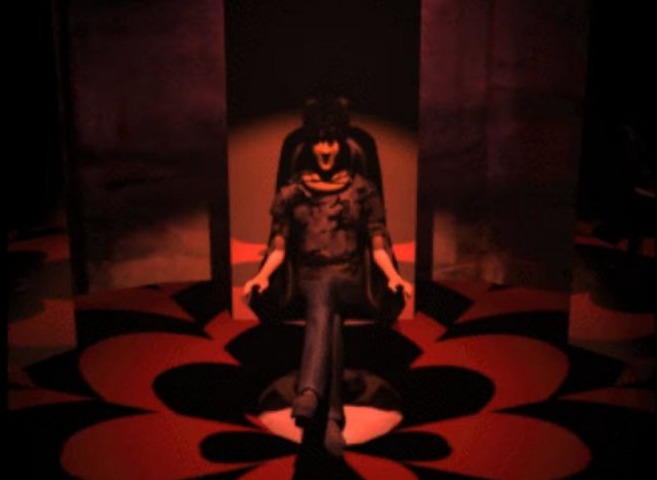
Ryo infers as per Yayoi’s whereabouts, but Sumio feigns ignorance, and jokingly claims that if Ryo managed to pick up a girl he must have finally flushed Kyoko out of his system. He reiterates that his manipulative behavior is a manifestation of the affection that he feels for Ryo. After admitting that Yayoi is, indeed, there with him, she makes her appearance and starts pleading for Ryo to free her, since Sumio is keeping her captive.
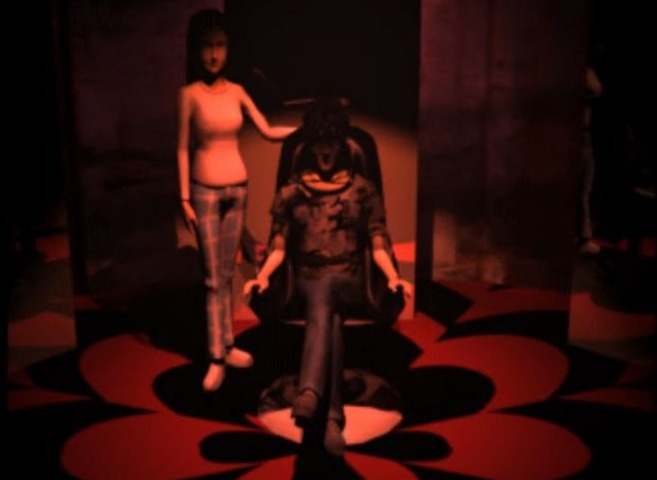
The player is given the choice as to whether to try and get Yayoi back (thus believing her claim that she’s not in league with Sumio) or to try and leave the room alone. If Ryo tries to leave, Yayoi will berate him for “running away”, much like Rumi did before. The point of the scene is for Sumio to test Ryo’s mettle, on whether or not he will make a stand and try to actually take a woman away from him. In other words, Sumio is recreating the love triangle they shared with Kyoko; back then, Ryo did not have the courage to take Kyoko into his arms, yet his infatuation still led to the breakdown of the relationship between her and Sumio.
If Ryo does try to “rescue” Yayoi, she will instead tell him that Ryo will forgive all of her heinous acts, no matter how horrible, which is foreshadowing for Ryo’s ultimate decision to become Mika’s protector; Mika is the girl that Ryo would be able to “forgive”, rather than Yayoi.

Regardless of the player’s choice, Yayoi eventually presents Sumio with the Violence Jack paper bag, containing Kyoko’s head. She, much like Sumio, claims that this is being done for Ryo’s sake due to their affection for him.
To Ryo’s protestations, Sumio explains that this is a game he set up, in which Ryo has to watch. This is a good time to bring up that the game has put a certain emphasis on “eyes” and “vision” until this point. During Ryo and Rumi’s conversation outside the club, and even in Ryo’s dream, attraction is always described as “looking” at someone, “being in their field of vision” and so on. At this point, the figure of speech is visualized by focusing directly on the character’s eyes, as Ryo is forced to truly “look” at his sister instead of “running away” from his feelings.
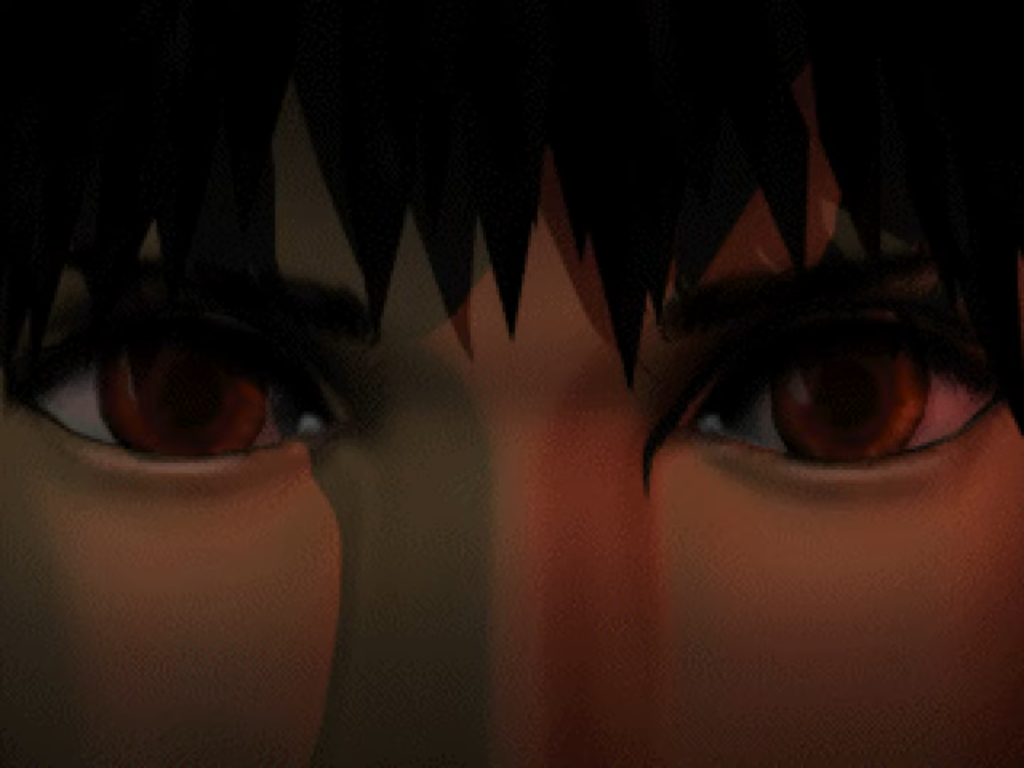
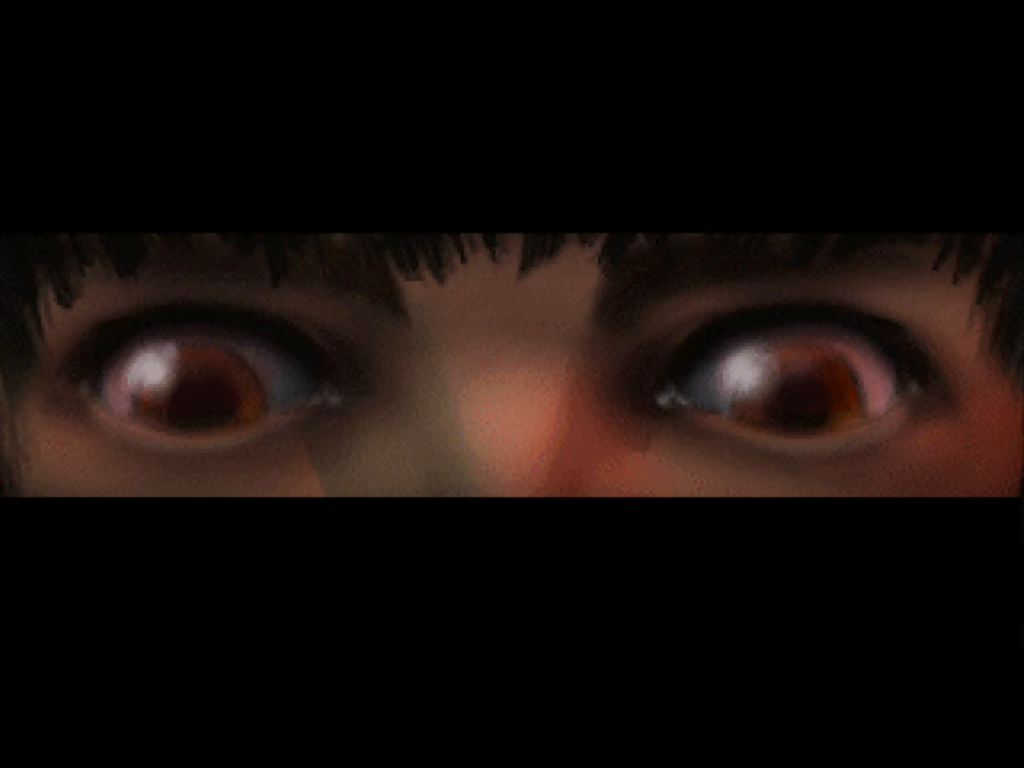
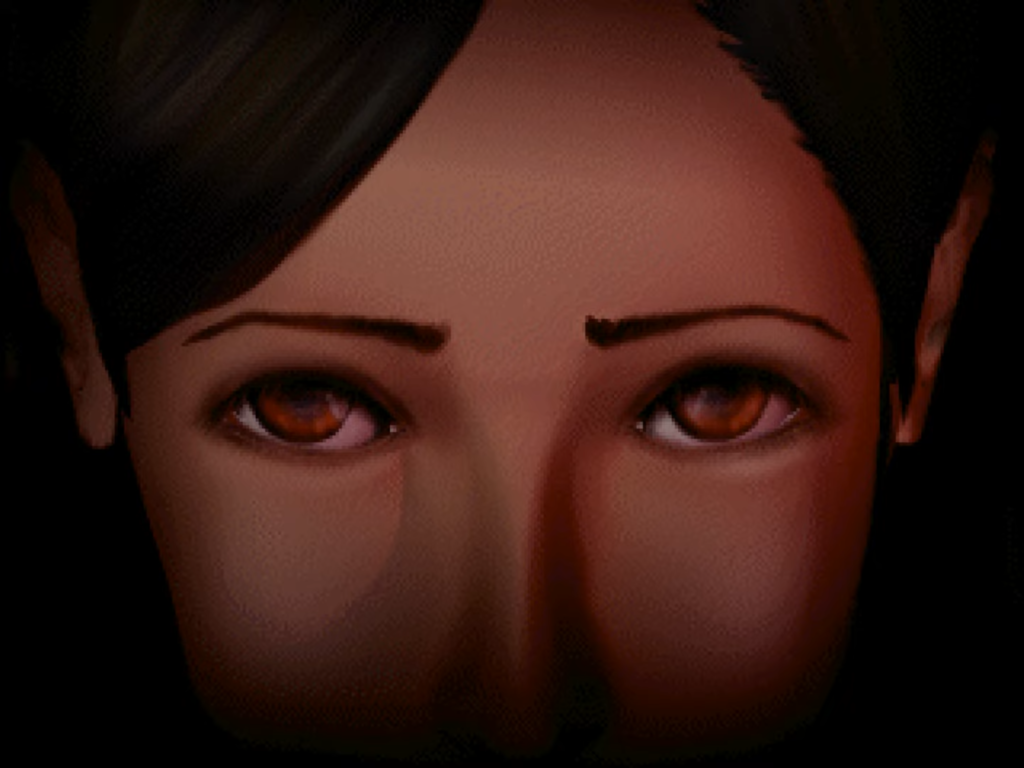
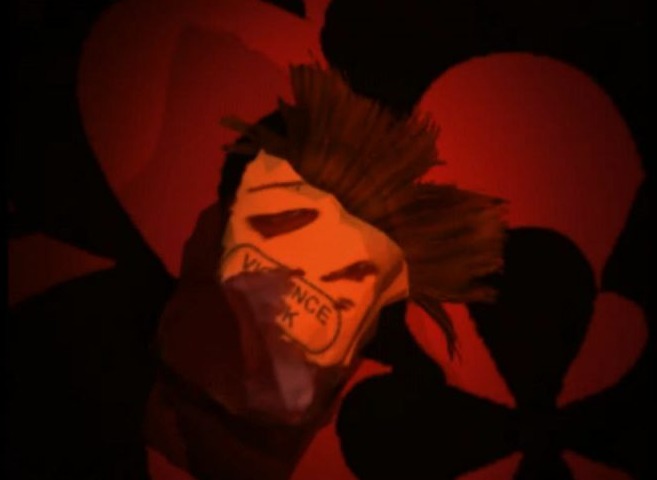
Sumio describes this game as revenge, revenge on Ryo for taking away something important from him (Kyoko) which he could not replace despite his collection of specimen (girls). Once he realized he was deprived of his beloved Kyoko by a perverted, incestuous love, he could not forgive Ryo. He says Yayoi is the one who made all of this possible, and at his command, she drops the paper bag, forcing Ryo to look at his sister’s severed head. As she drops it, Yayoi tells Ryo that he would choose him over Sumio, for Sumio’s sake. This is, again, foreshadowing Yayoi’s need for a protector, one who will “forgive” everything of her. By saying that picking Ryo over Sumio would be done for the sake of Sumio’s well-being, we can only surmise that Yayoi’s protector is headed for a terrible fate.
While not shown directly in the game, Sumio actually made a deal with Mithra in order to separate the Kazan siblings once and for all. The end result of said deal was the death of Kyoko in the bike accident, hence why Sumio and Mithra could be seen at the scene. Yayoi is shown to be aligned with Mithra through the course of the game, so it’s easy to infer that she was likely the one who presented Sumio with Kyoko’s head.
This is hinted at in 陰約 INYAKU and is confirmed by Suda himself in the Q&A from the In-depth Guide.
You could say that Sumio’s contract was the beginning of everything that happens in the story. So, what was it that he wanted? It was the eternal separation of Kyoko and Ryo. He apparently offered up his own death and soul to Mithra for this.
Source.
In Zoroastrianism, Mithra was the god responsible for establishing and watching over covenants. The way he is depicted in Moonlight Syndrome is reminiscent of the concept of “monkey paw”. That is to say that contracts established with Mithra usually will result in an outcome that is not desirable for the person in question. Case in point, Sumio’s wish to have the Kazan siblings be separated was born out of Sumio’s desire to fully possess Kyoko; instead, it resulted in Kyoko’s death.
Sumio is then shown outside the private room, flirting with a new girl. Kimika then approaches him.
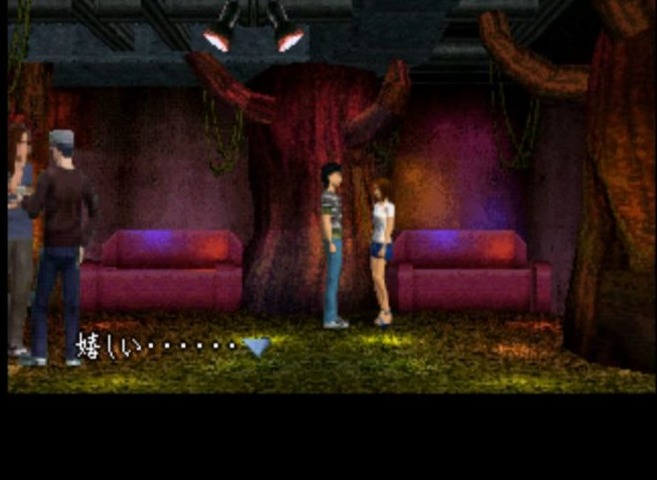
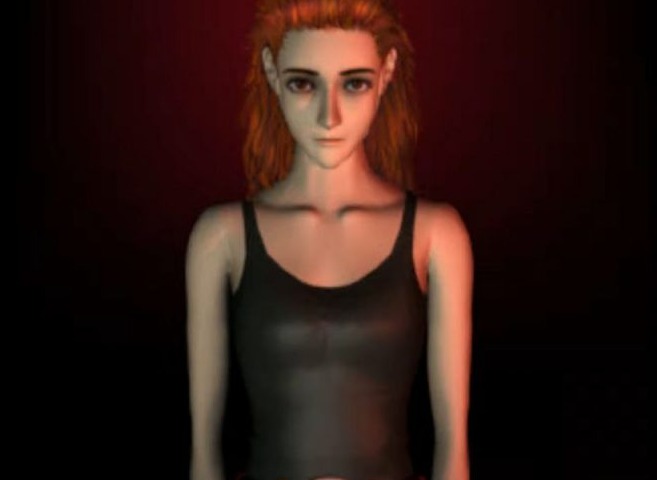
At the same time, Yayoi is asserting her sexual dominance over an unresponsive Ryo, calling him “Sumio’s substitute” which, in Japanese, is indicated by the kanji 代, the same one used in the old-new spelling of Hinashiro, 雛代, directly referring back to the town’s ritualistic past. Her words here could be taking on a double meaning, as she might be describing Ryo as a proxy for the role that Sumio had until this point (Yayoi’s protector/servant), or as a sacrificial doll for Sumio himself (in the sense that Ryo will have to suffer in Sumio’s place. Though that point will be made moot soon enough.) She is going to absorb Ryo, as Kyoko is already within her.
As she says this, Ryo is even sitting in the chair that was previously occupied by Sumio.
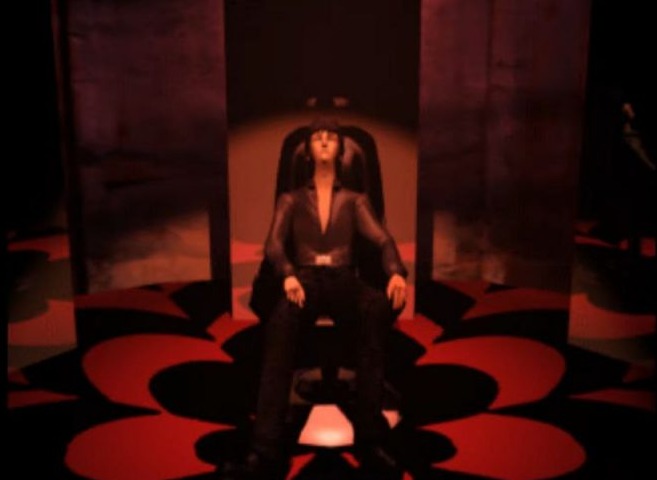
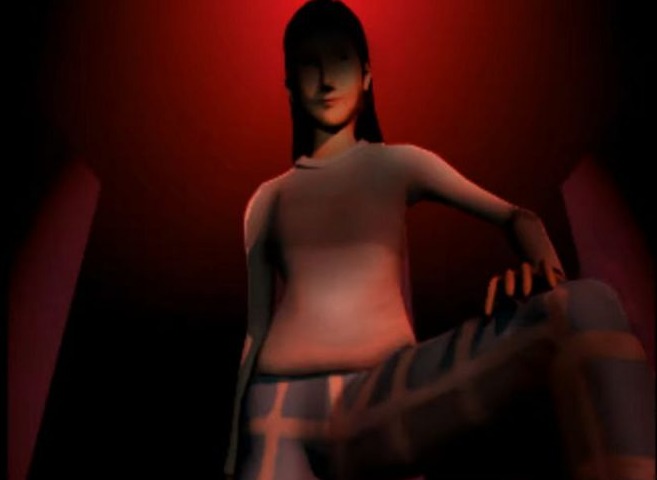
Kimika, in a daze, implies that she has gone through an abortion after being impregnated by Sumio. Sumio himself doesn’t even seem to remember her, but once she sets herself on fire in an attempt to kill both herself and him, he just accepts death by walking into the flames. In a sense, Kimika has finally broken out of Sumio’s “games”, as she finally asserts her own rules onto him rather than be bound by his.
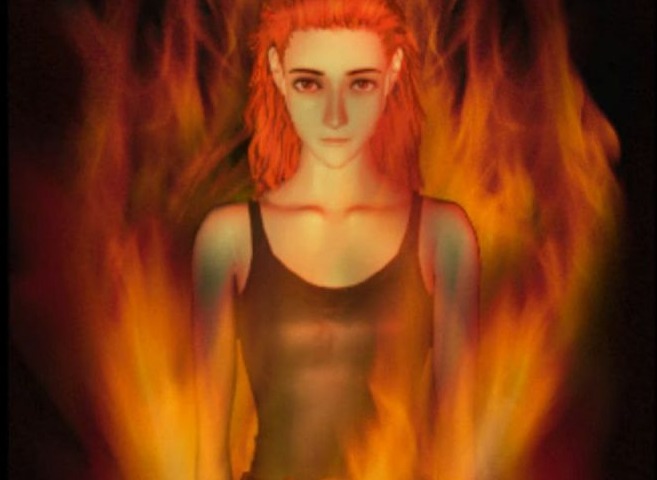
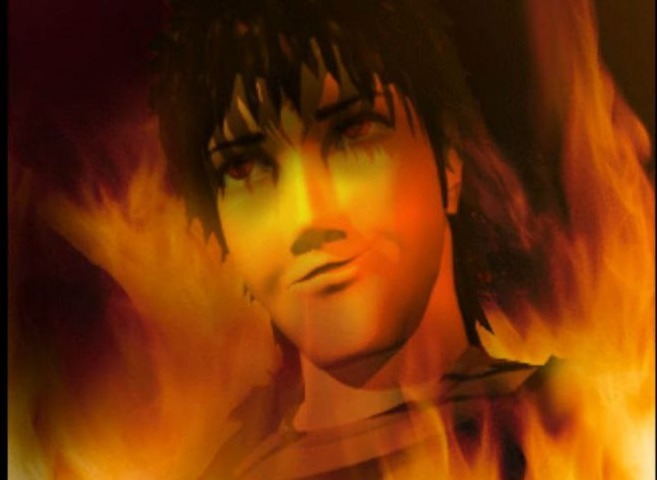
Yayoi, after saying goodbye to Ryo, steps out of the room to find Sumio’s charred corpse. She reassures him that even though he’s reduced to a burnt corpse, she will see things through to the end in his stead, and seemingly absorbs him through her eye. Again, referring back to the previous quote from Suda, it seems that Yayoi (Mithra’s servant) is receiving just compensation for the contract that Sumio established with Mithra, his own soul.
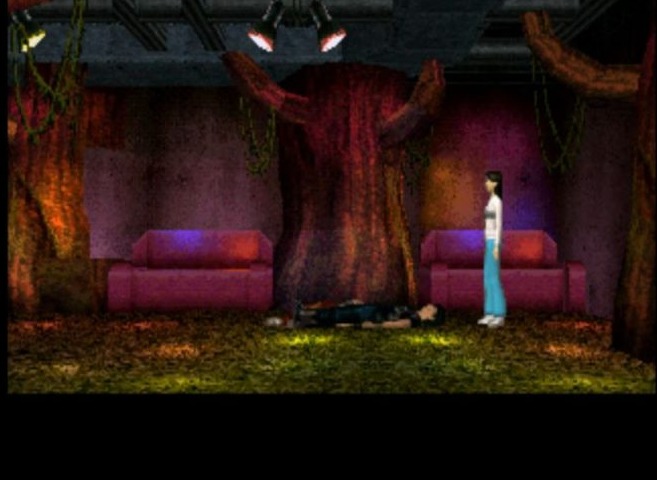

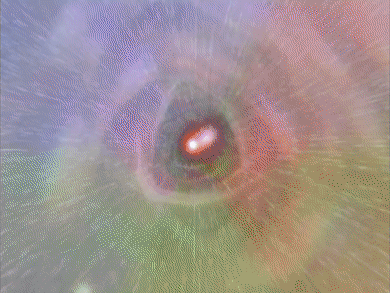
In what is presumably Yayoi’s inner world, a peaceful green field with a lonely tree, Ryo is able to talk to Rumi, Kyoko and Sumio. This is the day that Rumi remembered so fondly which she described earlier in the chapter, a day in which all three of them could just coexist in peace. Implying that perhaps that day had more significance to Ryo than he let on in the previous conversation. This is what will be referred to as “the edge of the world” henceforth, a memory that becomes a place, a collective vision of a possible afterlife.
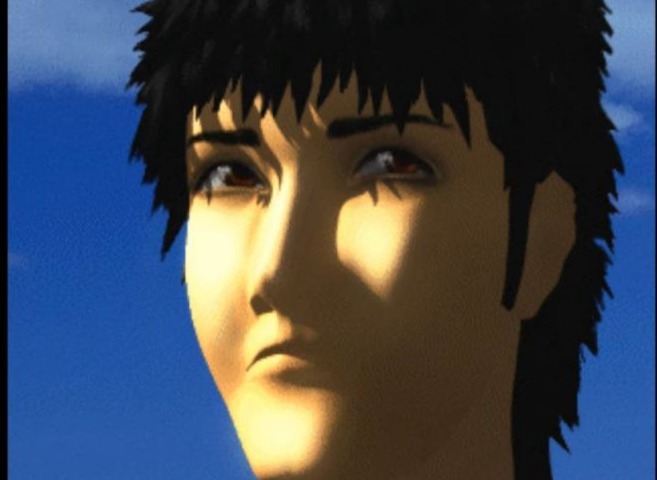
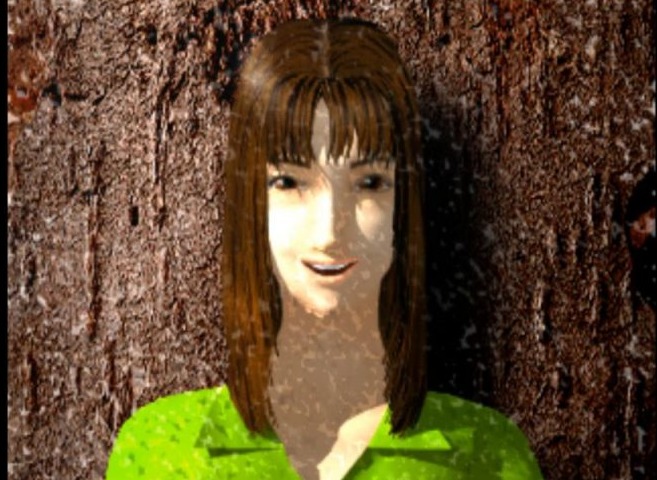
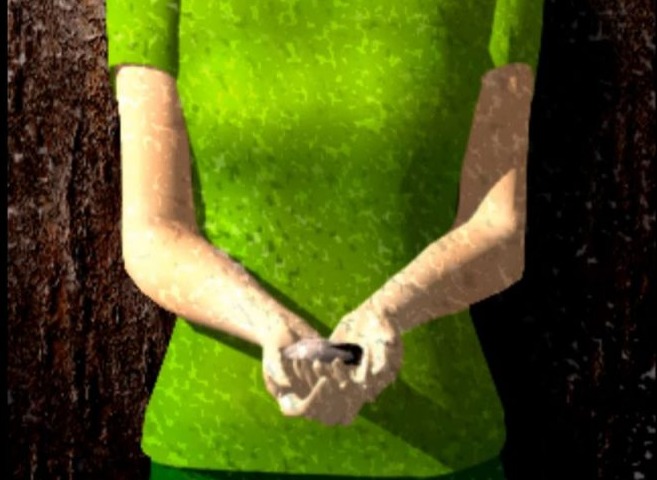
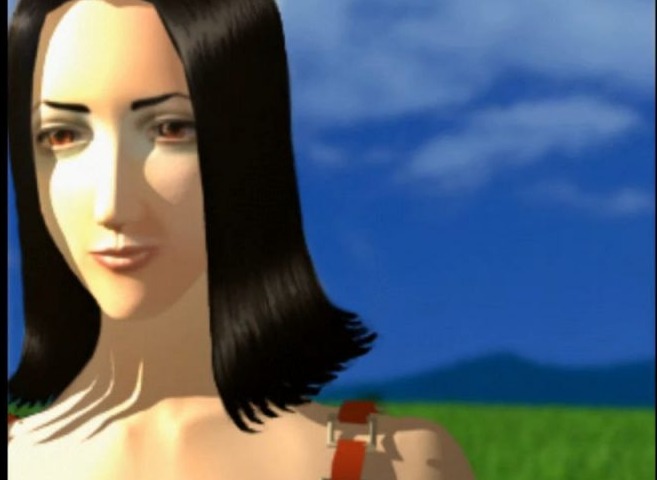
Rumi tells Ryo to take a break and enjoy the nice weather, Kyoko (who is standing in front of the tree trunk) is holding a dead bird, and compares its short life to the short relationship she was able to share with Sumio, and then reassures Ryo that even though she is a woman, she can take care of herself. (Again, going back to the mental image of Kyoko as an assertive woman who is, in many ways, ahead of her own brother.)
Even Sumio seems remarkably peaceful, describing the beautiful scenery as “paradise” and claiming that he dislikes lies, choosing instead the honest truth, a complete reversal to the manipulative personality he has shown in the real world. While he might not be able to understand what kind of inner pain keeps Ryo from being happy, he also tells him that there’s no point in acting tough if he is in need of help.
This is especially interesting because in his In-depth Guide Q&A, Suda describes Ryo as having a “love-hate” relationship with Sumio. This does not really come across when we see them together in the real world, since Sumio has already gone off the deep end. However, if we take this scene as being a memory, or even Sumio’s real persona after being absorbed by Yayoi, we can see that at some point Sumio and Ryo shared some sort of bond where they cared for each other, and Sumio at least tried to help Ryo through his inner torment even though he could not fully understand it.
Again going back to the Q&A, Suda did say that the influence of Yayoi was what drove Sumio over the edge, becoming the man we see in the game (even though he always had womanizing/possessive tendencies). Which makes her claim of taking in Ryo as “Sumio’s substitute” even more ominous. I would add that finding out that Ryo’s inner torment actually revolved around his incestuous feelings for his own sister, which was Sumio’s girlfriend, probably didn’t help.
How did Sumio and Yayoi become acquainted? Did Sumio know who Yayoi really was?
Source.
He met her at Lost Highway, like Kimika. They had a normal relationship, but Sumio gradually began to change, brainwashed by Yayoi. That said, he was always that sort of guy, so he slowly realised that something was wrong with Yayoi and that he had got himself caught up in a huge, uncontrollable maelstrom.
But sensing his heart burn with his feelings for Kyoko, he is pulled in by Mithra. He subconsciously senses Mithra lurking behind Yayoi and plans to make contact with him… That’s how it went.
One last time, Kyoko pleads to Ryo for him to smile, as they have nothing to worry about and their lives will go on peacefully and happily. Ryo frowns, then exits the club as if nothing had happened.
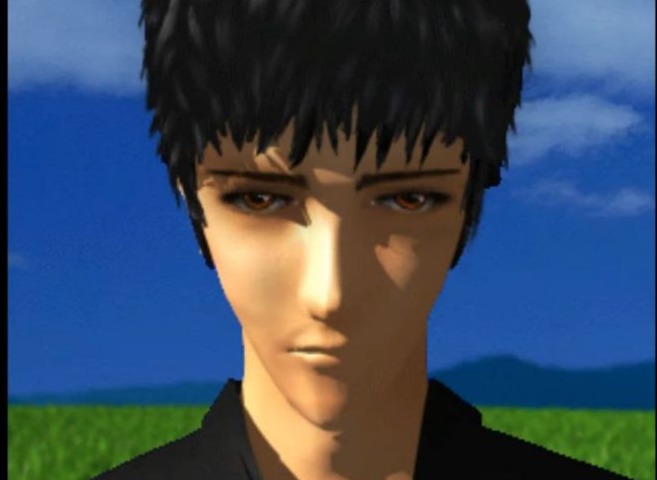
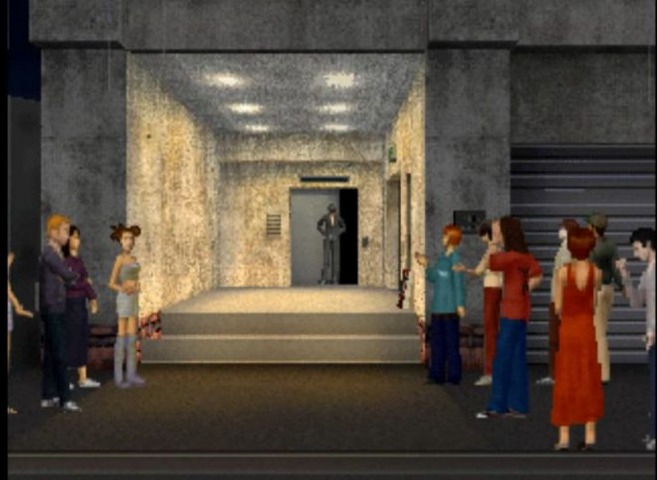
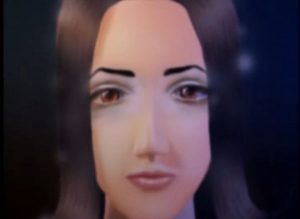
Outside of the club he meets up with Rumi again, who informs him of Sumio’s death. Rumi is not shaken by it, claiming that he had been forewarning her of his impending death for a while. Both Ryo and Rumi, at this point, are shown both in the real world, and at the edge of the world (Yayoi’s inner world, or an afterlife that is reached through her). While Yayoi has explicitly absorbed Kyoko, Ryo and Sumio, no mention is made of Rumi, making her presence conspicuous. Does that indicate that she, too, has entered a contract with Mithra? Or is she connected to Yayoi in some other, unexplained way? In エピローグ EPILOGUE, as Ryo is once again shown at the edge of the world, Rumi will instead be absent. Suda actually answered this in the In-depth Guide Q&A:
Why isn’t Rumi at the “edge of the world” [in エピローグ EPILOGUE]? That’s because I couldn’t take the time to write about her properly. The depiction of Rumi is something I wish I could’ve done more with.
As it stands, Rumi’s appearance at the edge of the world in 夢題 MOWDEI and her absence in エピローグ EPILOGUE are shrouded in mystery, though they might be hinting at future developments for her character.
Back at home, Ryo receives a phone call from Kyoko. Ryo does not acknowledge seeing her decapitated head in any way, yet informs her of Sumio’s suicide.
Kyoko appears to be suicidal, and despite acknowledging Sumio’s death, she still comments on how she cannot come back because she’s too scared of him now that he’s lost his mind. She then pleads one last time with Ryo to stay safe before crashing into the truck.
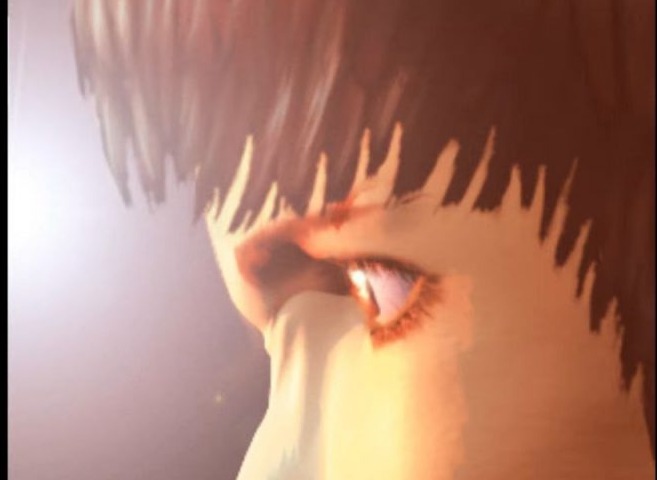
By this point, it should be obvious that the chronology of events we have been shown does not match at all. Taking into account that this chapter supposedly took place the day preceding Mika’s meeting with the cultist, which we’ll call “Day 1” for argument’s sake. If we go by the order the events are shown in 夢題 MOWDEI, both Kimika’s self immolation and Kyoko’s bike accident during the night of Day 1, specifically with the fire preceding the bike accident. However, a glaring contradiction emerges straight away: Sumio and Yayoi show the severed head of Kyoko before she gives her goodbye message to Ryo and ultimately crashes into the truck. The fallacies become even more glaring when taking プロローグ PROLOGUE into account: Mika meets up with Sumio in the park at night, and while no specific timetables are given, he would either have been at the Lost Highway club or dead by that point. The girls at school do discuss the self immolation and the bike accident during Day 2 as if they both happened the day before, congruently with what has been shown in 夢題 MOWDEI, but again that means it would have been impossible for Mika to meet up with Sumio at all. Lastly, in the evening of Day 2, Mika and her family watch a news report claiming that the motorcycle accident on Reigetsu Pass just took place. But that would again be nonsensical, because said accident was the inciting incident that led Sumio to being present at the club the night Kimika decided to kill herself and him, and as we established both in the classroom chatter and in Mowdei, Sumio is already dead by this point.
Putting these events in a logical timeline is impossible, and it was an intentional choice on the part of the writer: Thankfully, Suda actually elaborated on this point in the previously referred to Q&A.
After Sumio falls victim to Kimika Takahashi at the club, Ryo receives a phone call from Kyoko. Does this mean that chronologically Kyoko’s death comes first, followed by Sumio’s?
Source.
Think of the concept of time in a story where Mithra is involved as different from time in real life. The gravity of acknowledging a person’s death is represented by the feeling of the length of time.
For Mika’s classmates, Kyoko’s death isn’t something that affects their daily lives. They have the weakest and fastest recognition of it, and it’s explained in conversation format in the game’s prologue. Next, Mika learns more information from the news than she heard from her classmates’ conversation, and in Mowdei, Sumio first acknowledges it when he initially sees Kyoko’s head.
And then, in the final scene of Mowdei, Ryo acknowledges it. Since Ryo had the deepest connection to Kyoko, it takes him the longest time of all to become aware of her death.
The death of someone close to you. I tried showing the gap that everyone has felt (or will feel) towards death using a staggering of time.
In other words, the events in the game are not shown chronologically; rather, the order we see them in is dictated by how the POV characters feel about said events. Mika, who is infatuated with Sumio, would obviously be in denial of his death (despite her classmates already being aware of it) much like Ryo would be in denial of Kyoko’s; at the same time, Mika would take a longer time to acknowledge the existence of Kyoko herself since she’d be a rival to Sumio’s attentions. Acknowledging Kyoko might even mean acknowledging the fact that she’s nothing more than a substitute for her in Sumio’s eyes.
One aspect of Zoroastrian mythology that Suda discusses during that Q&A is that of Zurvan, the eternal time.
Zurvan (time)
Source.
In Zoroastrianism, it was thought that time had existed before the world’s creation, and that it would continue to exist even after the world came to an end. It was also thought that the time containing the history of the world was a “limited time” excised and created from this constant, eternal time. It seems as though there were people who thought that this “eternal time” itself was the god Zurvan.
In a way, I think this helps explain the weird timeline that we are shown in the game. Much like the world’s “time” is part of a larger “eternal time” (Zurvan), it’s almost as if each character in the story exists in its own “personal time”, which in itself is just a fraction of a larger whole acting independently.
For example, Kyoko’s phone call to Ryo which we see at the end of 夢題 MOWDEI probably did happen before the accident in the “eternal time” of Zurvan: however, it only exists in Ryo’s “personal time” after he is ready to acknowledge her passing at the end of the chapter. Mithra’s involvement makes the reality of Hinashiro nonsensical and contradictory specifically because the wishes of those who enter covenants with him are themselves petty and incompatible; In a sense, his ability to twist reality around himself is also the power of humanity’s collective delusion.
If one were so inclined, the Truth Files can be helpful to place the events in a chronology that makes sense for outside observers. The Truth Files are faux journalistic reports written by Masahi Ooka (who would later collaborate with Suda on a variety of projects, essentially becoming the co-writer of the Kill the Past franchise) which cover the events of the game from different third party perspectives.
As the journalists themselves are not personally involved with the incidents at all, we can assume these dates to be the closest to “reality”, especially since they are reinforced multiple times by multiple people.
According to these reports, the Reigetsu Pass incident happened on May the 25th at 10PM, while Kimika’s suicide-homicide took place on May the 27th at 1AM. With that in mind, we can surmise that (ignoring the chronological contradictions derived from the characters’ “personal time”) Mika’s encounter with the cultist, the first event we see in the game, took place in the evening of May the 26th 1997. プロローグ PROLOGUE then shows us Mika’s day through the 27th, and ends on the evening. Mowdei then flashes back to the events of the 26th and ends after 1AM on the morning of the 27th, after Sumio and Kimika’s body are taken away by the ambulance.
This means that Kyoko’s death is never actually depicted in the game directly, as it happened in the evening of the 25th. She’s dead for the entire duration of the game, which means that everything we see of her is though the lens of other characters.


